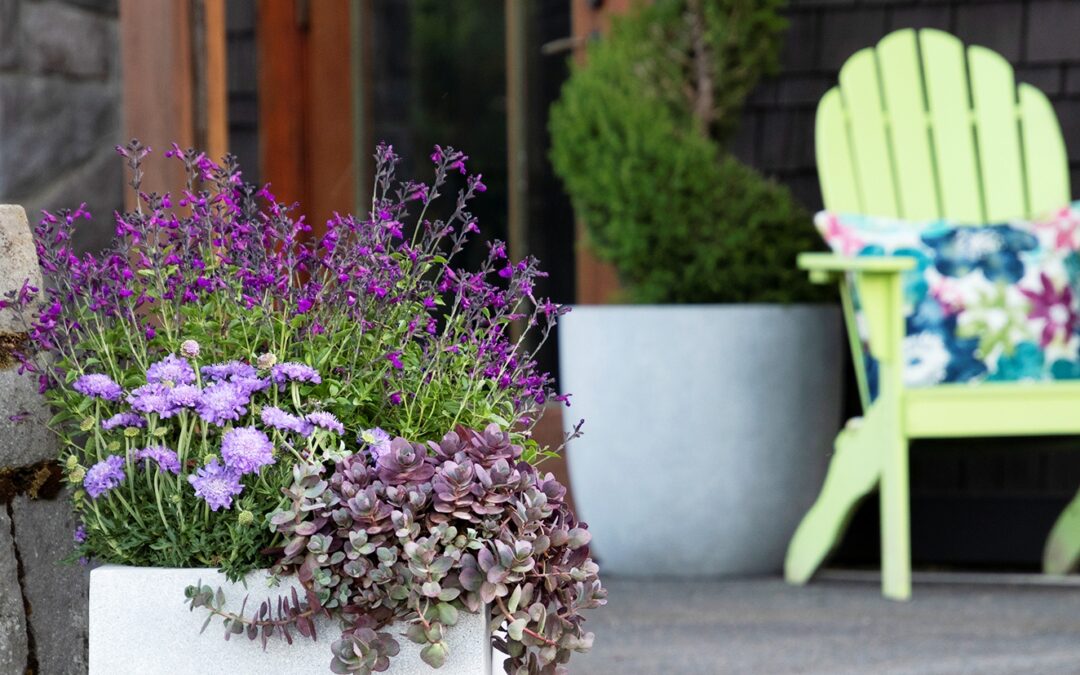Tips for Growing a Garden Sure to Attract Winged Visitors
By Lisa Watters-Lain, Arizona’s Garden Gal
Butterflies are some of the most beautiful and exotic creatures in the landscape. A butterfly garden offers two benefits: it’s an easy way to see more butterflies, and it’s also a way to help them since many local habitats have been lost to human activities like building homes and roads. It is easy to increase the number and variety of the winged beauties in your yard. Simply grow the plants they like to feed on!
An added bonus: Because so many butterflies snack on the same plants hummingbirds enjoy, this list works equally well to attract more hummingbirds, too.
Butterflies
The butterfly garden is full of activity now through fall. Yellow Sulphurs alight on a coneflower, while burnt-orange skippers jostle with bumblebees on oregano and lavender. Monarchs, on their long journey to their winter grounds in Mexico, stop to rest and take nectar from asters and other late-blooming flowers. The bright yellow blossoms of goldenrod are especially favored by Swallowtails and Painted Ladies. A host of beneficial insects and birds looking for an insect meal snack through your gardens at the same time.
Red Salsa Coneflowers and Arizona Sun Blanket Flower attract butterflies through September, forming handsome seed heads that eventually feed your birds. Autumn Joy Sedums draw butterflies to dusty-pink blossoms, which darken to create a dramatic accent in late Fall and winter. Ornamental grasses often change color in the Fall and form exciting seed heads. Skipper caterpillars feed on grasses and often overwinter at the base of grasses.
Ignition Purple Salvia, a notably heat and drought tolerant petite sage, explodes with dark purple buds that open to vibrant purple flowers through summer and fall. The flowers are utterly irresistible to local butterflies and a quick pick-me-up for migrating hummingbirds. Here is the best part: javelina and rabbits find this knee-high perennial absolutely repugnant! Because there are so many colors to choose from, gardeners collect them like some might collect roses or daylily. Salvia is available in several forms of red, pink, white, and apricot. Each is so hardy it naturalizes once established.
Hummingbirds
Hummingbirds ingest half their weight in food every day. Flowering plants provide the nectar, and tiny insects provide the protein busy hummingbirds need to keep going. Hummingbirds visit a vast array of plants but especially enjoy any plants that display a tubular-shaped, brightly-colored flower. Strategically place a feeder where it’s surrounded by the following plants and enjoy a greater number of humming visitors attending the banquet.
Balboa Sunset Trumpet Vine is a local butterfly and hummingbird magnet. Clusters of deeper red four-inch flowers cover the plant. Expect lightning-quick coverage up a trellis to mask old fences and sheds or accent a beautiful courtyard wall. Plant more Balboa Sunsets, and you will have more winged visitors, guaranteed.
Diversity is the key to a dynamic landscape full of hummingbird antics and more butterflies at rest in your gardens. Provide them food and housing and the number of visitors to the garden grows each season. A detailed listing of local butterfly and hummingbird plants is available free for the asking to my garden readers. Simply ask for the garden guide titled “Plants that Attract Butterflies & Hummers” for a detailed list of local plants.
Until next issue, I’ll be helping locals attract more hummingbirds and butterflies here at Watters Garden Center.
Lisa Watters-Lain can be found throughout the week at Watters Garden Center, 1815 W. Iron Springs Rd in Prescott, or contacted through her web site at WattersGardenCenter.com or FB.com/WattersGardenCenter .

